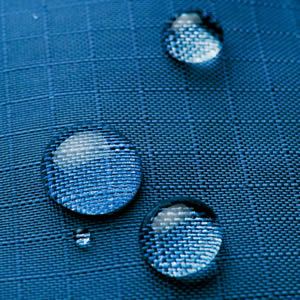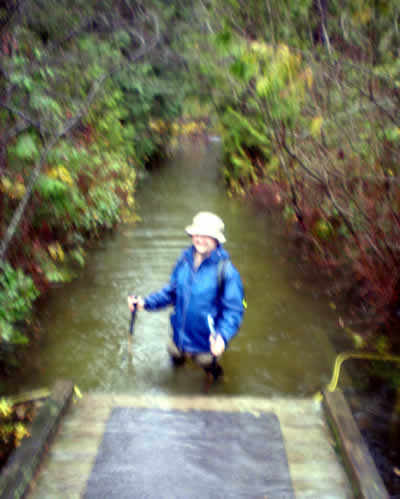Is an expensive waterproof jacket worthwhile? How I finally learned what I needed to know about hard shell jackets by accidentally buying a good one

Is a pricey Gore-Tex waterproof-breathable (hard shell) jacket:
- an awesome, worthwhile luxury that anyone in who spends time outdoors in cold, wet places should buy if they possibly can?
- an absurd, costly, pretentious waste of my money, kind of like buying a beefy SUV because you might drive down a logging road once in a while?
I’m a sporty city mouse, getting a little gray, and starting to avoid anything harder than a dayhike in the wildnerness that looms over Vancouver, and even my dayhikes are getting pretty tame.1 I’ve been just outdoorsy and poor enough over the years that I have never paid the price, but always wondered if I should. I’ve finally done my homework, and my answer is decisive.2 And I figured it out by buying the “wrong” jacket.
I accidentally bought a great jacket
Before I’d done my homework properly, I was agonizing over waterproof jacket technology in MEC (Mountain Equipment Co-Op, the Canadian version of REI), and I decided to bite the bullet and buy a gorgeous Patagonia Gore-Tex hard shell — $430 of waterproof-breathable awesomeness, for those occasions when I might really like to stay as dry as possible. I was also thinking it would be a valuable addition to my emergency preparedness kit, even if my non-emergency needs for a good hard shell are minimal.
That price tag is steep for something you don’t expect to get a lot of use out of. After almost an hour of staring at racks and racks of jackets, and trying on dozens of them, I finally made my choice — out of fatigue as much as anything else, and just because the pricey Patagonia fit and felt great. I took it to the till, where I completely missed a total price that was far too low, because a MEC employee was trying to take a survey about my shopping experience while I paid.
When I got home, I read the label, looking for more information about the jacket, like care instructions, and noticed a distinct lack of a the word “Gore-Tex.” It simply wasn’t there. Instead, the label advertised something called H2No. Huh? I looked at the receipt and discovered I’d paid not $430 but just $130. I’d picked a cheaper, nearly identical jacket from the rack beside the pricier ones, thinking they were all the same.
And lucky for me, because after a lot of leisurely and surprisingly interesting research, I realized that Patagonia’s H2No is probably excellent, and there’s no way the Gore-Tex is worth almost more than three times as much, not to me, not for my needs. Nice mistake. Am I certain that it’s just as good as the Gore-Tex jacket? No — but it’s safe to assume, despite the price difference, that it’s in the same ballpark, especially given that I do not ever plan to ever be facing a wet night on a mountainside.

Vocabulary: soft versus hard
Active wear jackets come in two basic flavours, hard and soft shells. The difference eluded me until recently. They represent the poles of a compromise between permeability to air and water. Hard shells are rain jackets, waterproof at the expense of breathability … and a soft shell is breathable at the expense of water resistance.
There are other variables to juggle — like durability, insulation, wind resistance, weight and so on — but the soft/hard distinction reflects the importance of that waterproof-breathability trade-off. It defines jackets. Above all else, a jacket for an active lifestyle is going to be soft or hard.
Waterproofing alone is pretty easy technologically, but it’s impossible to make a jacket both waterproof and truly breathable — you just can’t truly have it both ways,3 although that’s the half-right hype about Gore-Tex and its competitors.
Conversely, making a jacket extremely breathable is no problem at all — but the more it breathes, the more it also lets in wind and rain. You can maximize breathability so far that there’s effectively no water and wind-resistance at all, but then you’ve basically got workout clothes (or fishnet stockings); to be a “jacket,” a garment needs at least some rain and wind resistance. This is not difficult, but it will also fall well short of being truly waterproof.
The important thing to understand about the high-tech “breathable” fabrics is that they are only so breathable. It’s a relative concept. It’s a marvel of technology that a waterproof fabric can breathe even a little bit, and that’s why Gore-Tex is a wildly successful brand. But the most high-tech hard shell is still much less breathable than any soft shell jacket. Any soft shell can breathe well. But it’s still going to be like a steam room in that hard shell!4
What’s “better,” breathable or waterproof?
It depends on your usage, of course, but there is a clear answer for the average active person: breathability is actually much more valuable than waterproofing. Rain soaking through a soft shell is not really a problem for most people, most of the time — as long as you can go home and dry off and warm up, you probably care more about breathability (and durability, and lightness, and so on).
Breathability is basically equivalent with comfort. If you can get away with it, you want as much of it as possible.
Hard shells are just not that important for short trips that end in a hot shower. You only want to sacrifice breathability if you need to keep as dry as possible for as long as possible — which usually only matters if you’re out for longer periods in colder, wetter weather, where getting soaked is a real hazard to comfort (or life). In other words, fairly hardcore outdoor activity. That is where the hard shells shine!
I run in a thin Merino wool shirt, even in fairly bad Vancouver weather, because it maximizes breathability, while still offering surprising insulation and warmth even when wet (Merino’s biggest feature). I can get absolutely drenched: I just run home and dry off!
Gore-Tex competitors
It seems like hardly anyone knows it yet, but there are now several worthy competitors to Gore-Tex. The main Gore-Tex patents were issued in the 1976 and 1980 and have been expired for many years now, but Gore-Tex has aggressively protected their brand from newcomers: see Mike Kessler’s excellent feature article for OutsideOnline.com. Nevertheless, the competitors are here, probably most notably eVent (which you won’t necessarily see on the label, because it is licensed to manufacturers to market under whatever brand they like).
But the differences between these fabrics are minor and mysterious — splitting invisible hairs. Most of the data you’d actually need to objectively measure them is unavailable, and there are countless variables and methods of testing. Mike Kessler writes: “Gore, eVent, Polartec, Columbia, you name it—they’re all essentially cherry-picking their own data and then stamping an A+ on their ads and catalogs.”
The difference that isn’t minor? The cost! Gore-Tex commands a premium price for their brand. Consumers have no way of knowing if an unfamiliar brand of wateproof-breathable is anywhere near as good as Gore-Tex, or even fraudulent. What’s to keep a manufacturer from simply labelling a crappy jacket as high tech? Like sticking “olive oil” on a bottle of dyed canola oil. Probably nothing. But what keeps Gore-Tex prices higher is not any clear technological dominance, but rather the common consumer fear of missing out if we don’t spring for the “real thing.”
But if you stick to any of the reasonably well-known outdoor gear brands, you’re not going to get anything shoddy. And basically all the modern-waterproof breathables are good at what they do. Allen Dixon has tried them all and reviewed them for backpackinglight.com, concluding that the differences are real but minor for the average person.
And that’s assuming you really need a hard shell at all. Which most active people don’t.

-
A tromp around Bunzten Lake is about my speed these days — maybe including a sweaty push up the ridge to look over Indian Arm. ↩︎
-
At least, I have an answer for a people like me: quite active, but not extreme, and certainly not out in the weather overnight. If your ass is badder, my answer probably won’t apply to you, but how I got there may still be of interest. ↩︎
-
If you could make such a truly talented jacket, you’d be rich! This is the holy grail of jacket tech, but it’s probably impossible in principle. ↩︎
-
That’s why they all have armpit vents: the human body can produce way more sweaty water vapour than any fabric can let out. ↩︎